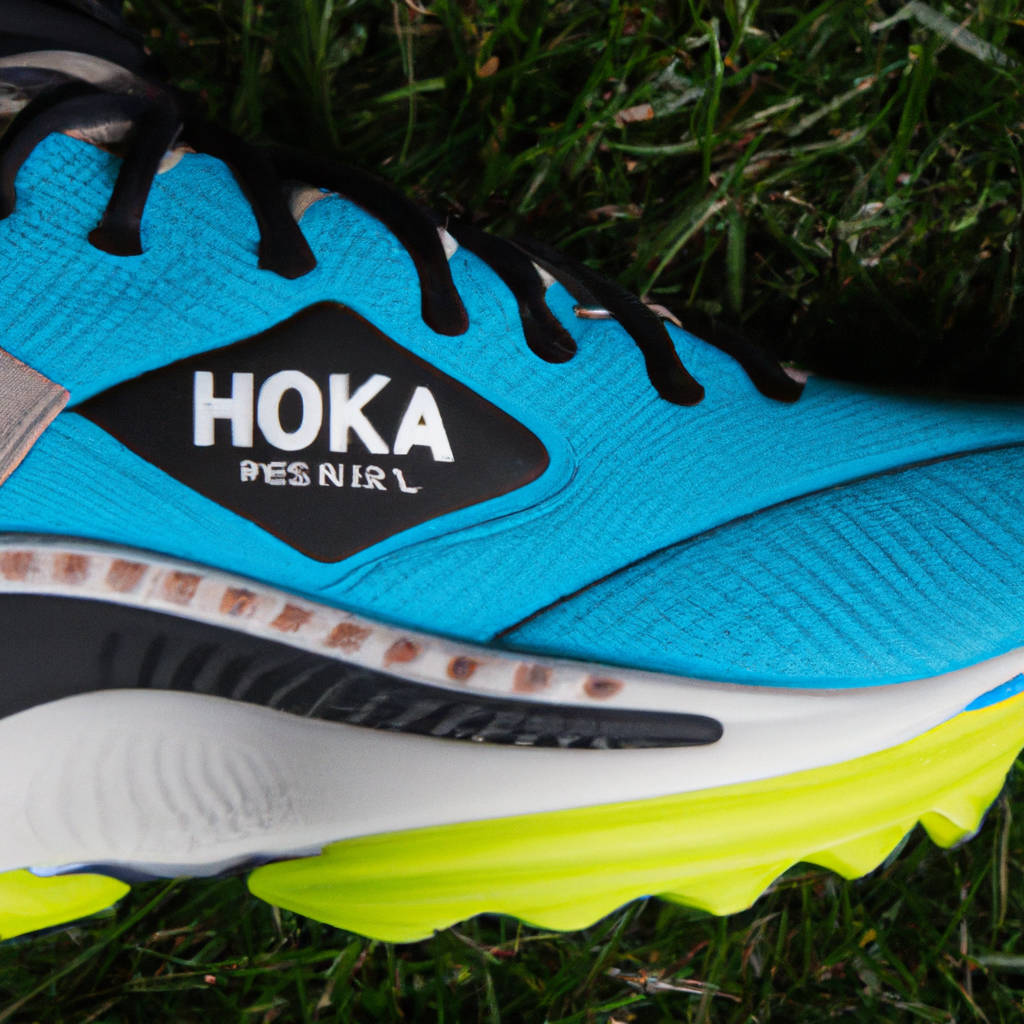Hoka One One is a renowned French athletic shoe brand, globally recognized for its innovative designs and high-quality performance footwear. Originating in Annecy, France, Hoka One One was established in 2009 by Nicolas Mermoud and Jean-Luc Diard, both passionate runners and former employees of Salomon, another prestigious sports shoe brand. The brand’s name derives from the Maori language phrase ‘hoka o-nay o-nay,’ which translates to ‘fly over the earth,’ reflecting the brand’s mission to provide runners with a feeling of smooth, effortless motion. Hoka One One’s unique selling point lies in its signature ‘maximalist’ shoe design, featuring oversized, cushioned midsoles that offer superior comfort and support, reducing the impact on the runner’s joints and muscles.
This design revolutionized the running shoe industry, challenging the prevailing trend towards minimalist, barefoot-style running shoes. Today, Hoka One One is a part of the Deckers Brands portfolio and is a favorite among both professional athletes and amateur runners worldwide. Its wide range of products, including road running shoes, trail running shoes, and hiking boots, caters to diverse needs and preferences, offering an optimal blend of lightweight construction, durability, and exceptional cushioning.

Company History and Evolution
The history and evolution of a company is a fascinating journey that begins with a single idea or goal and unfolds over time into a dynamic entity. This process typically starts with the founder, who identifies a need or demand in the market and sets forth to address it through a unique product or service. The starting point of the company may be small, perhaps even a one-person operation working out of a garage or home office. Over time, through strategic planning, hard work, and a bit of luck, the company begins to grow. It may start hiring employees, expanding its product or service offerings, and establishing a brand presence.
The evolution of a company isn’t always linear or predictable. There are often periods of rapid growth followed by times of stagnation or even decline. This could be due to changes in the market, technological advancements, competition, or internal challenges. The company’s leadership needs to be flexible and adaptable, ready to pivot or implement changes as needed.
Key moments in a company’s history might include securing its first major client, launching a revolutionary product, expanding into new markets, or undergoing a merger or acquisition. These milestones shape the company’s direction and often define its culture and values. They also contribute to the company’s reputation and standing in the industry.
Throughout its evolution, a company is also likely to face setbacks and challenges. These might include financial struggles, employee turnover, negative publicity, or failed product launches. However, it’s worth noting that many successful companies view these challenges as learning opportunities and use them to improve and evolve.
In conclusion, the history and evolution of a company is a dynamic and complex process, shaped by a multitude of factors. It’s a testament to the resilience, adaptability, and vision of the people behind the company.
Product Line and Sponsorships
Product line and sponsorships represent two significant aspects of marketing strategy in today’s competitive business environment. The product line refers to an array of related products that a company offers, often sharing the same branding and targeting a similar market segment. This approach enables businesses to cater to diverse customer needs, increase market share and achieve economies of scale in production and marketing.
Sponsorships, on the other hand, are strategic partnerships where a business provides financial or other support to an event, individual, or organization in return for promotional benefits. These benefits could include visibility on promotional materials, media coverage, or access to an engaged audience. Sponsorships can significantly enhance brand awareness, improve brand image, and create strong emotional connections with consumers.
When effectively integrated, product line and sponsorships can deliver synergistic benefits. For instance, a company can use sponsorships to promote its product line and generate interest and demand. This could involve sponsoring events or individuals that align with the product line’s positioning and resonate with the target audience. For example, a sports equipment company might sponsor a popular athlete or sporting event, leveraging their influence and reach to showcase its wide range of products. This not only raises brand visibility but also associates the brand with the positive attributes of the sponsored entity, such as excellence, performance, or popularity.
However, it’s crucial for businesses to ensure that the sponsored entity’s values and image align with their own. A mismatch could lead to consumer confusion or even backlash, undermining the intended benefits. Similarly, it’s essential to maintain a consistent and high-quality product line. Offering sub-par products can damage brand reputation and customer trust, regardless of any high-profile sponsorships.
In conclusion, product line and sponsorships are powerful tools that can drive business growth and competitiveness when used strategically. They offer businesses an opportunity to reach and engage their target markets more effectively, create a distinctive brand image, and ultimately, drive sales and profitability.

Athletic Footwear and Innovations
Athletic footwear has undergone significant transformation over the years, evolving from simple shoe designs to sophisticated equipment that enhances the performance of athletes. The advent of advanced technology has made it possible for manufacturers to develop innovative features that have revolutionized the industry. One of the most notable innovations is the use of lightweight materials to construct the shoes. This has drastically improved the speed and agility of athletes, as they can now move with less effort.
Another significant innovation is the introduction of cushioning technology, such as air-filled soles or gel inserts, which have exponentially increased the comfort level of athletic shoes. This technology not only provides support and shock absorption to protect athletes from injuries, but also ensures optimal performance during intensive physical activities.
Furthermore, the use of motion control technology has been pivotal in addressing issues related to foot stability and balance. This has been particularly beneficial for athletes with specific foot conditions, as it allows them to perform without discomfort or fear of injury.
In addition, manufacturers have started to incorporate smart technology into athletic footwear. For instance, some shoes now come equipped with sensors and chips that track and analyze the user’s performance data, such as speed, distance covered, and calories burned. This information can be accessed via a mobile application, allowing athletes to monitor their progress and make necessary adjustments to their training regimen.
More recently, customization has become a major trend in the athletic footwear industry. Many brands now offer the ability for customers to personalize their shoes, choosing everything from the color and material to the type of cushioning and sole. This not only enhances the aesthetic appeal of the shoes, but also allows athletes to choose features that best meet their individual needs and preferences.
In conclusion, the athletic footwear industry has seen numerous innovations over the years, all aimed at improving the performance, comfort, and style of the shoes. As technology continues to advance, it is anticipated that athletic footwear will become even more sophisticated, potentially leading to breakthroughs that could further revolutionize the industry.
Sponsorships and Partnerships
Sponsorships and partnerships are powerful strategies that businesses use to promote their brands, products, and services. They provide an opportunity to reach a wider audience and create a positive image for the brand. Sponsorships often involve financial support to events, individuals, or organizations, in exchange for promotion and brand awareness. For instance, a company might sponsor a sports event, allowing them to display their logo and advertisements during the event, thus exposing their brand to a large audience.
On the other hand, partnerships often involve a mutual agreement between two or more businesses to work together for mutual gain. This could be in the form of joint marketing initiatives, product development, or other collaborative ventures. These partnerships can lead to increased market share, improved customer service, and enhanced product offerings.
Both sponsorships and partnerships provide businesses with a unique opportunity to increase their visibility and reach. They allow companies to tap into new customer bases, build stronger relationships with existing customers, and enhance their overall brand image. However, these strategies should be carefully planned and executed to ensure they align with the company’s overall goals and objectives. From a strategic perspective, choosing the right event to sponsor or the right business to partner with is crucial to ensure the success of these initiatives.
In today’s competitive business landscape, sponsorships and partnerships are no longer just optional strategies but rather essential tools for business growth and development. They not only provide financial benefits but also offer opportunities for learning, innovation, and expansion. Therefore, it is vital for businesses to understand the value of these strategies and integrate them into their overall business plan.
